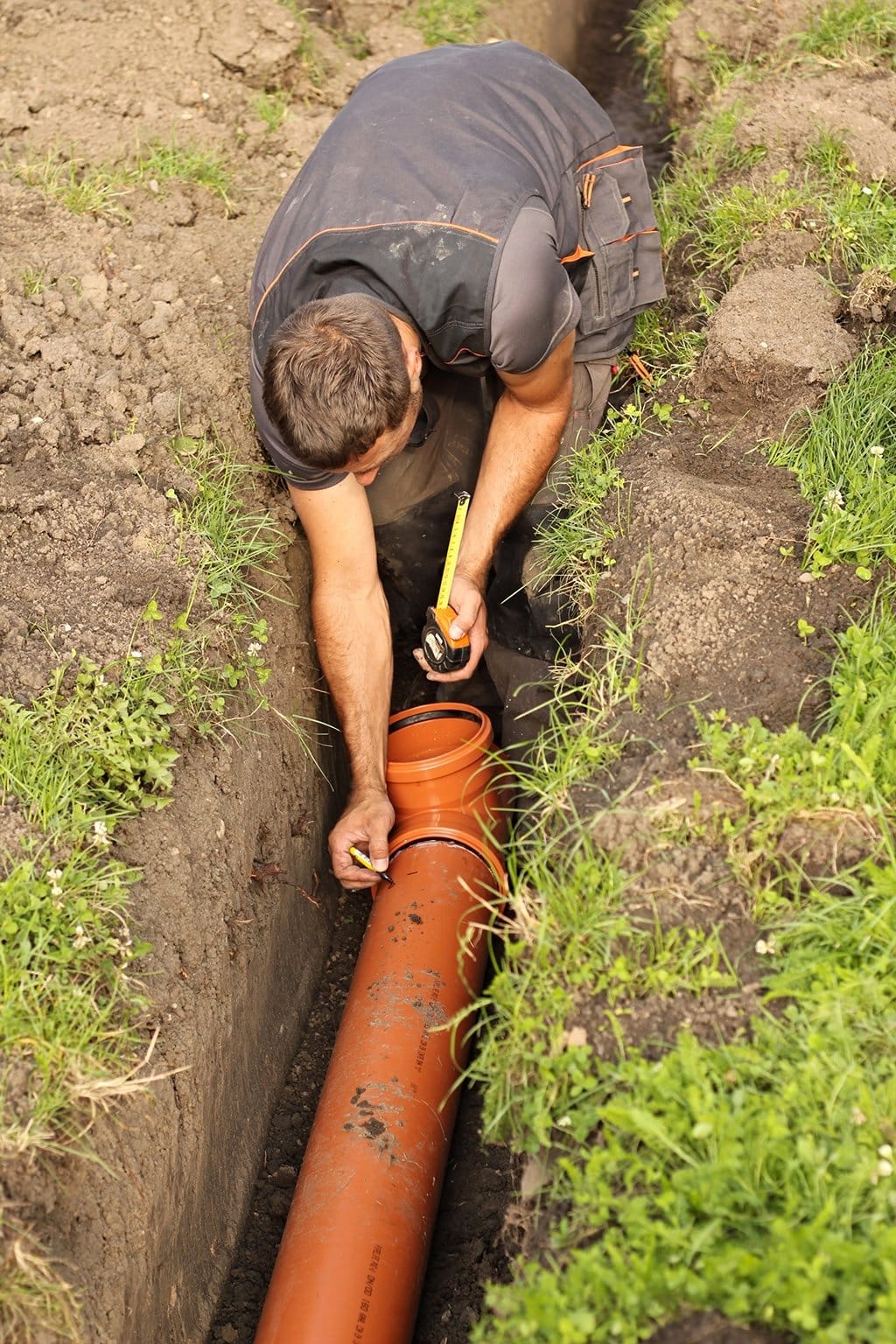
How to Prevent Sewer Backups
How to Prevent Sewer Backups
Are you worried about sewer backups and the havoc they can wreak on your home?
Sewer backups are not only inconvenient but can also cause significant damage and health risks. This comprehensive guide will walk you through everything you need to know about preventing sewer backups, from understanding their causes to implementing effective maintenance practices.
Learn how to spot early warning signs, the benefits of regular inspections, and the best ways to upgrade your sewer system. With the right knowledge and proactive measures, you can protect your home and enjoy peace of mind.

Understanding Sewer Backups
What Are Sewer Backups?
Have you ever wondered what exactly a sewer backup is and how it can affect your home?
Sewer backups occur when wastewater that is supposed to flow into the municipal sewer system or septic tank instead reverses direction and flows back into your home. This can lead to a myriad of issues, including water damage, unpleasant odors, and potential health hazards due to contamination. Understanding what sewer backups are is the first step in preventing them.
Common Causes of Sewer Backups
Sewer backups can result from several factors. One of the most common causes is a blockage in the sewer line. Blockages can be caused by the buildup of debris, such as grease, hair, and other foreign objects, that accumulate over time and obstruct the flow of water.
Tree roots are another major culprit; they can infiltrate sewer pipes and cause significant damage and blockages. Additionally, heavy rainfall or flooding can overwhelm the sewer system, leading to backups. Aging infrastructure and poorly maintained sewer lines also contribute to this problem.
Impact of Sewer Backups on Your Home
The impact of a sewer backup on your home can be severe and far-reaching. The most immediate effect is water damage, which can affect floors, walls, and personal belongings. The contaminated water can also introduce harmful bacteria and pathogens into your home, posing serious health risks.
Moreover, the unpleasant odors that accompany a sewer backup can make your living environment uncomfortable and unsanitary. If not addressed promptly, sewer backups can lead to mold growth and structural damage, resulting in costly repairs and restoration efforts.
Routine Maintenance to Prevent Sewer Backups
Regular Inspections
Do you regularly inspect your plumbing system? Regular inspections are vital in preventing sewer backups. By having a professional plumber assess your sewer lines periodically, you can identify potential problems before they escalate.
Inspections can reveal issues such as small blockages, cracks, or root intrusions that, if left unattended, could lead to severe backups. Aim to schedule inspections at least once a year to keep your plumbing system in top condition.
Cleaning Drains and Pipes
Routine cleaning of your drains and pipes is essential in maintaining a smooth-flowing sewer system. Over time, debris like hair, soap scum, grease, and food particles can accumulate and cause blockages.
Using a drain snake or a high-pressure water jet can effectively remove these obstructions. Additionally, consider scheduling professional cleaning services annually to ensure thorough cleaning of your sewer lines. Regular cleaning prevents buildup and reduces the risk of backups.
Using Enzyme Cleaners
Have you tried using enzyme cleaners?
Enzyme-based drain cleaners are a safe and effective way to maintain your plumbing system. Unlike harsh chemical cleaners, enzyme cleaners use natural bacteria and enzymes to break down organic waste. They are environmentally friendly and can help prevent clogs without damaging your pipes. Regularly using enzyme cleaners can keep your drains clear and reduce the likelihood of sewer backups.
Proper Disposal Practices
Implementing proper disposal practices is another key step in preventing sewer backups. Many household items can cause blockages if disposed of improperly.
What Not to Flush
Avoid flushing anything other than toilet paper and human waste. Items such as wipes, feminine hygiene products, and paper towels can cause severe blockages.
Safe Disposal of Grease and Oils
Grease and oils should never be poured down the drain. They can solidify and create stubborn blockages. Instead, collect grease in a container and dispose of it in the trash.
Managing Food Waste
Use garbage disposal for small food scraps, but avoid putting fibrous or starchy foods down the drain. These can tangle and form blockages.
Sewer Backup Prevention in Carrollton
Specific Challenges in Carrollton
Do you live in Carrollton and worry about sewer backups?
Carrollton faces unique challenges due to its aging infrastructure and the region’s tendency for heavy rainfall. The older sewer lines in some areas are more prone to cracks, blockages, and root intrusions. Additionally, Carrollton’s flat terrain can exacerbate drainage issues, making it more susceptible to sewer backups during storms.
Local Solutions and Services
To combat these challenges, local solutions are tailored to Carrollton’s specific needs.
Regular Sewer Line Inspections
Professional plumbers in Carrollton offer regular sewer line inspections using advanced video technology. These inspections can detect early signs of damage or blockage, allowing for timely intervention.
Pipe Lining and Replacement
For older homes, services like pipe lining or trenchless pipe replacement can upgrade the sewer system without extensive digging. These methods are effective in reinforcing and renewing aging pipes.
Drain Cleaning Services
Local plumbers also provide routine drain cleaning services to prevent blockages caused by debris and grease buildup. Using high-pressure water jets and drain snakes, they ensures your pipes remain clear.
Sewer Backup Prevention in Coppell
Unique Issues in Coppell
Coppell faces its own set of challenges when it comes to sewer backups. The city’s rapid growth has put a strain on its sewer infrastructure. Additionally, the region’s clay soil can cause pipes to shift and crack, leading to potential blockages. Heavy rains and flooding also pose significant risks, making sewer backup prevention a priority for Coppell residents.
Recommended Practices and Services
To address these issues, Coppell residents can follow these recommended practices and services:
Regular Inspections and Maintenance
Frequent inspections by local plumbers can identify problems early. Regular maintenance, such as clearing tree roots and removing debris, helps keep the sewer lines in good working order.
Installation of Backwater Valves
Installing backwater valves can prevent sewage from flowing back into your home during heavy rains. This is particularly useful in flood-prone areas of Coppell.
Upgrading Sewer Lines
Residents of older homes should consider upgrading their sewer lines to modern materials like PVC or ABS. These materials are more resistant to shifting and root intrusion, providing a more reliable system.
Sewer Backup Prevention in Dallas (75205 – 75382)
Addressing Challenges in Dallas Zip Codes
Residents of Dallas, particularly in the zip codes 75205 to 75382, face distinct challenges with sewer backups. These areas include a mix of older neighborhoods with aging sewer infrastructure and newer developments that may experience different issues.
Heavy rainfall and flash flooding are common, increasing the risk of sewer backups. The diverse soil conditions in these zip codes also contribute to the shifting and cracking of sewer pipes.
Localized Solutions and Services
To tackle these challenges, Dallas residents can utilize several localized solutions and services:
Routine Sewer Line Inspections
Regular inspections by professional plumbers can help detect early signs of trouble. Video inspections are especially useful for identifying cracks, blockages, and root intrusions.
Trenchless Sewer Repair
Trenchless repair methods, such as pipe bursting and lining, are effective for addressing damaged pipes without extensive excavation. These techniques are ideal for older neighborhoods with established landscaping.
Flood Prevention Measures
Installing sump pumps and backwater valves can help prevent sewer backups during heavy rains. These devices ensure that water is properly redirected away from your home, reducing the risk of flooding.
Upgrading Your Sewer System
Benefits of Modern Sewer Systems
Are you aware of the benefits of upgrading your sewer system?
Modern sewer systems offer several advantages over older setups. They are designed to be more durable and efficient, reducing the risk of blockages and backups. Upgraded systems can handle higher volumes of wastewater and are less prone to damage from tree roots and other external factors.
Additionally, modern materials and technologies used in new sewer systems can extend the lifespan of your plumbing, ensuring a more reliable and long-lasting solution for your home.
Types of Sewer Line Materials
When considering an upgrade, it’s essential to understand the different types of sewer line materials available:
PVC (Polyvinyl Chloride)
PVC pipes are widely used in modern sewer systems due to their durability, flexibility, and resistance to root intrusion. They are also lightweight and easy to install, making them a cost-effective option.
ABS (Acrylonitrile Butadiene Styrene)
ABS pipes are similar to PVC but are known for their higher impact resistance and strength. They are suitable for areas with shifting soil conditions and are also resistant to chemical corrosion.
Cast Iron
Cast iron pipes are highly durable and have been used for decades. They offer excellent noise reduction, making them a good choice for residential areas. However, they are heavier and more expensive than PVC or ABS.
Clay Pipes
Clay pipes are an older option and are prone to cracking and root intrusion. While they have a long lifespan, they are less commonly used in modern installations due to their fragility.
Costs and Considerations
Upgrading your sewer system involves various costs and considerations. While the initial investment can be significant, the long-term benefits often outweigh the costs.
Initial Installation Costs
The cost of upgrading your sewer system depends on factors such as the length of the pipes, the materials used, and the complexity of the installation. PVC and ABS pipes tend to be more affordable than cast iron.
Maintenance and Repair Costs
Modern sewer systems typically require less maintenance and fewer repairs, reducing overall costs in the long run. Regular inspections and proper maintenance can further extend the lifespan of your system.
Installing Backwater Valves
How Backwater Valves Work
Have you heard about backwater valves and how they can protect your home?
A backwater valve is a device installed in your home’s main sewer line that allows wastewater to flow out but prevents it from flowing back in. During heavy rainfall or sewer system overloads, these valves automatically close to stop wastewater from reversing direction and entering your home. This mechanism is crucial in preventing sewer backups, especially in areas prone to flooding or with aging sewer systems.
Professional Installation Tips
For backwater valves to function correctly, professional installation is essential. Here are some tips to ensure a successful installation:
Choose the Right Valve
There are different types of backwater valves, including manual and automatic models. Consult with a professional plumber to determine which type is best suited for your home’s plumbing system.
Proper Placement
The valve should be installed in an accessible location on your main sewer line. This placement ensures easy maintenance and inspection. Typically, backwater valves are installed in the basement or in a cleanout fitting.
Using Sump Pumps and Ejector Pumps
Differences Between Sump Pumps and Ejector Pumps
Are you confused about the difference between sump pumps and ejector pumps? Both devices play crucial roles in managing water in your home, but they serve different purposes.
Sump Pumps
Sump pumps are designed to remove water that accumulates in a sump basin, typically found in basements. They are used to prevent basement flooding by pumping out groundwater that seeps into the basin and directing it away from your home.
Ejector Pumps
Ejector pumps, on the other hand, handle wastewater from basement-level plumbing fixtures. They are responsible for pumping sewage and wastewater up to the level of the main sewer line or septic tank, ensuring proper drainage from toilets, sinks, and laundry facilities located below the main sewer line.
When to Use Each Type
Knowing when to use each type of pump is essential for maintaining a dry and functional home:
Use Sump Pumps for Groundwater
If your home has a basement that is prone to water infiltration, especially during heavy rains or high water table conditions, a sump pump is necessary. It helps keep your basement dry and prevents water damage.
Use Ejector Pumps for Basement Plumbing
If you have plumbing fixtures in your basement, such as a bathroom or laundry room, an ejector pump is required. It ensures that wastewater from these fixtures is properly pumped to the main sewer line, preventing backups and ensuring sanitary conditions.
Addressing Sewer Issues in Older Homes
Common Problems in Older Sewer Systems
Do you live in an older home? If so, you might be more prone to sewer issues. Older sewer systems often face unique challenges due to aging infrastructure. Common problems include cracked or collapsed pipes, root intrusion, and outdated materials like clay or cast iron. These issues can lead to frequent blockages and backups, requiring more frequent maintenance and repairs.
Solutions for Upgrading Older Systems
Upgrading your older sewer system can mitigate many of these problems. Here are some effective solutions:
Pipe Lining
Pipelining, also known as cured-in-place pipe (CIPP) lining, is a minimally invasive method to repair damaged pipes. A flexible liner coated with resin is inserted into the damaged pipe and then inflated. Once the resin cures, it forms a new, durable pipe within the old one. This process can fix cracks and leaks without the need for extensive digging.
Pipe Bursting
Pipe bursting is another trenchless method used to replace old pipes. This technique involves pulling a new pipe through the existing one, which simultaneously breaks the old pipe apart and installs the new one in its place. It’s an effective way to upgrade your sewer system without significant disruption to your property.
Complete Replacement
In some cases, a complete replacement of the sewer system may be necessary. This option is more invasive and costly but ensures that all old, damaged pipes are replaced with modern materials. It’s a long-term solution that can greatly improve the reliability and efficiency of your sewer system.
Emergency Response Plan for Sewer Backups
Immediate Steps to Take
Do you know what to do if a sewer backup occurs in your home? Acting quickly is crucial to minimize damage and health risks. Here are the immediate steps you should take:
- Stop Using Water: Cease using water in your home to prevent further sewage from backing up into your living spaces. This includes flushing toilets, running taps, and using appliances like dishwashers and washing machines.
- Turn Off Electricity: If water has entered your basement or other areas with electrical components, turn off the electricity to prevent the risk of electrocution.
- Protect Yourself: Wear protective gear such as gloves, boots, and masks to avoid direct contact with sewage, which can contain harmful bacteria and pathogens.
- Contain the Spread: Use towels or barriers to prevent the spread of sewage into unaffected areas. Close doors to keep contaminated areas isolated.
Contacting Professional Help
Once you’ve taken immediate action, it’s crucial to contact professional help. Professional plumbers and restoration services have the expertise and equipment to handle sewer backups safely and efficiently.
- Call a Plumber: Contact a licensed plumber to address the source of the backup. They can inspect your sewer lines, identify blockages, and perform necessary repairs.
- Hire a Restoration Service: Restoration professionals can help clean and sanitize affected areas. They use specialized equipment to remove sewage, dry out spaces, and prevent mold growth.
- Notify Your Insurance Company: Inform your insurance provider about the sewer backup. They can guide you through the claims process and help cover the cost of repairs and restoration.

FAQs
- What are the main causes of sewer backups?
Sewer backups are commonly caused by blockages due to debris buildup, tree root intrusions, and heavy rainfall or flooding. Aging infrastructure and damaged pipes can also contribute to sewer backups.
- How can I tell if my home is at risk of a sewer backup?
Early warning signs include slow-draining sinks and tubs, gurgling sounds in drains, and foul odors emanating from drains. Regular inspections and maintenance can help identify potential risks before they become severe.
- What should I do immediately after a sewer backup occurs?
Stop using water, turn off electricity if water has reached electrical outlets, wear protective gear, and try to contain the spread of sewage. Then, contact a professional plumber and a restoration service to handle repairs and cleanup.
- How often should I have my sewer lines inspected?
It is recommended to have your sewer lines inspected at least once a year. Regular inspections can help detect and address issues early, preventing major damage and costly repairs.
- Can I prevent sewer backups myself, or do I need professional help?
While you can take preventive measures such as proper disposal practices and using enzyme cleaners, professional help is often necessary for thorough inspections, cleaning, and addressing more complex issues like root intrusions and pipe replacements.




















